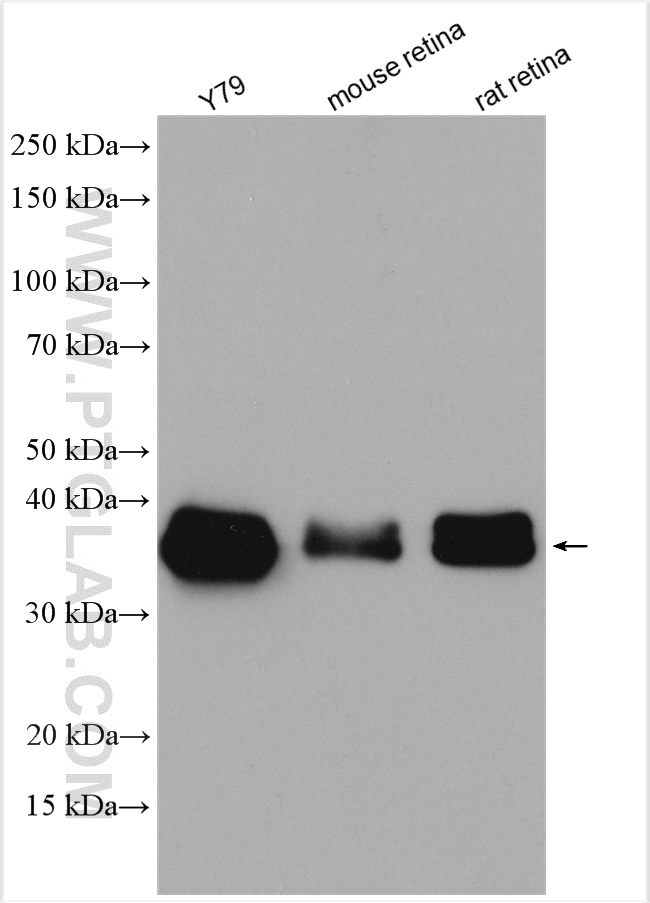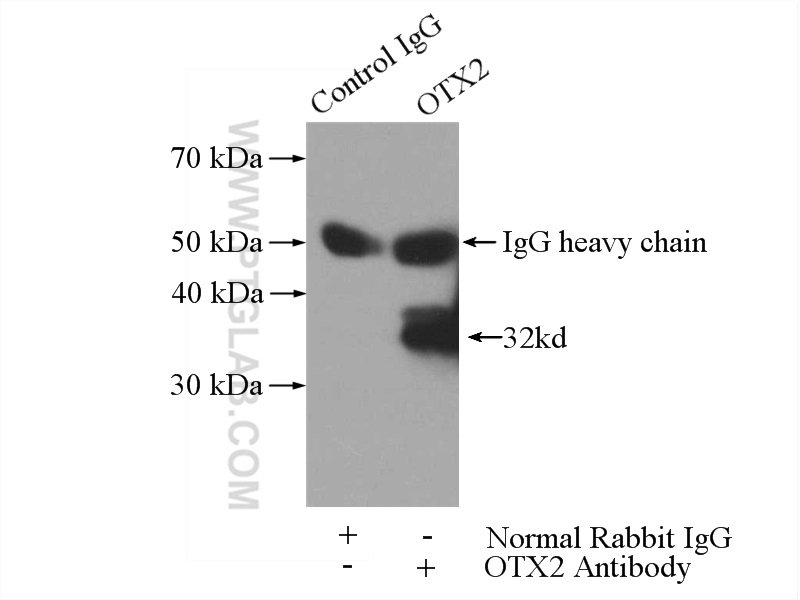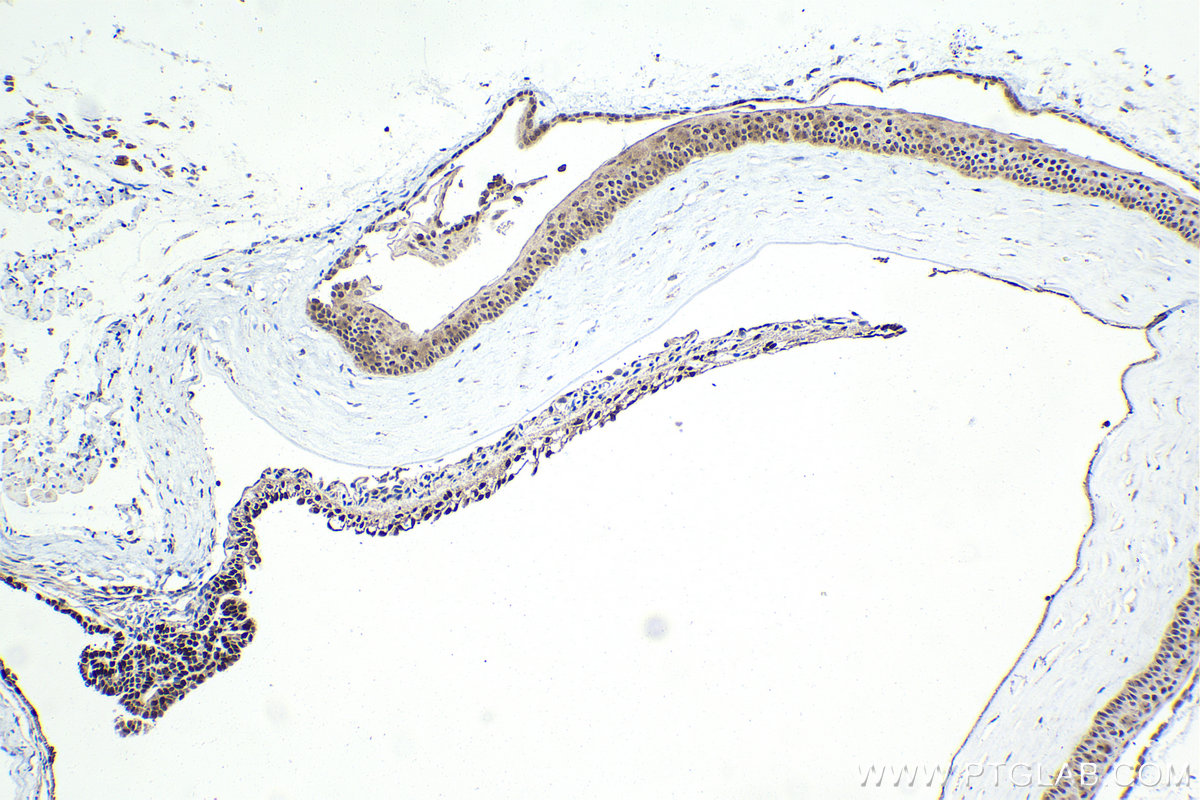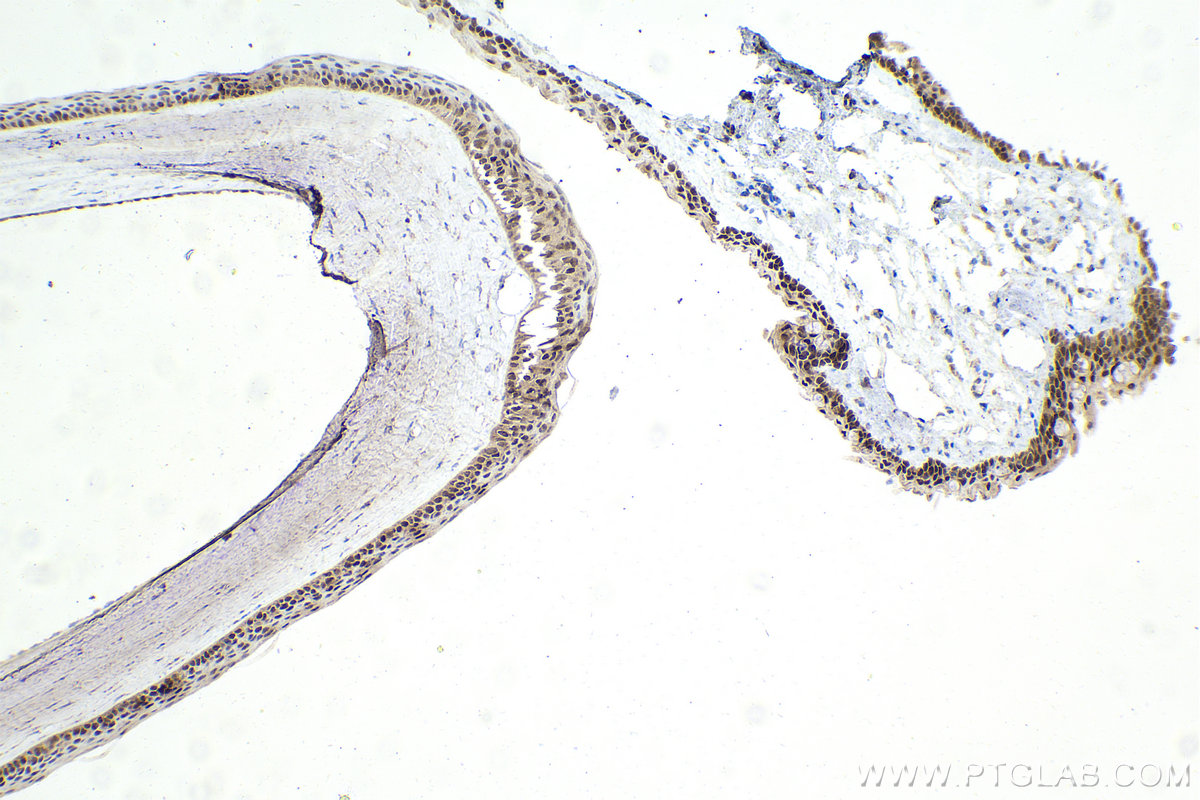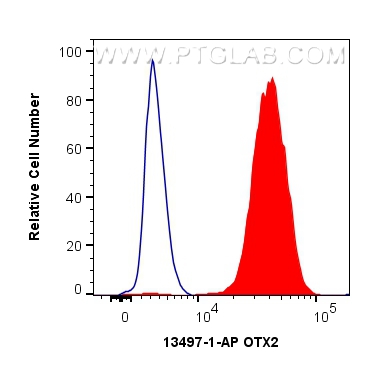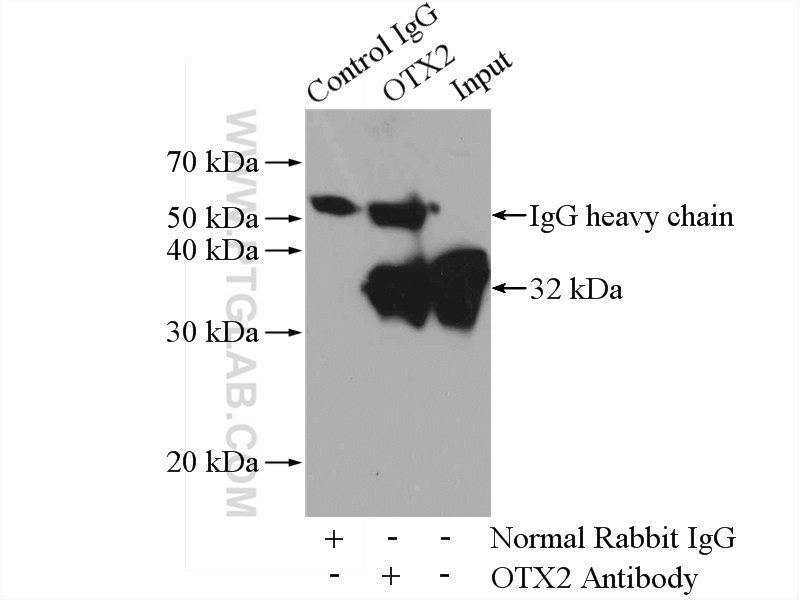验证数据展示
经过测试的应用
| Positive WB detected in | Y79 cells, mouse retina tissue, rat retina tissue |
| Positive IP detected in | Y79 cells |
| Positive IHC detected in | mouse eye tissue, rat eye tissue Note: suggested antigen retrieval with TE buffer pH 9.0; (*) Alternatively, antigen retrieval may be performed with citrate buffer pH 6.0 |
| Positive FC (Intra) detected in | HepG2 cells |
推荐稀释比
| 应用 | 推荐稀释比 |
|---|---|
| Western Blot (WB) | WB : 1:2000-1:16000 |
| Immunoprecipitation (IP) | IP : 0.5-4.0 ug for 1.0-3.0 mg of total protein lysate |
| Immunohistochemistry (IHC) | IHC : 1:1000-1:4000 |
| Flow Cytometry (FC) (INTRA) | FC (INTRA) : 0.40 ug per 10^6 cells in a 100 µl suspension |
| It is recommended that this reagent should be titrated in each testing system to obtain optimal results. | |
| Sample-dependent, Check data in validation data gallery. | |
产品信息
13497-1-AP targets OTX2 in WB, IHC, FC (Intra), IP, CoIP, ChIP, ELISA applications and shows reactivity with human, mouse, rat samples.
| 经测试应用 | WB, IHC, FC (Intra), IP, ELISA Application Description |
| 文献引用应用 | WB, IHC, IP, CoIP, ChIP |
| 经测试反应性 | human, mouse, rat |
| 文献引用反应性 | human, mouse, chicken |
| 免疫原 |
CatNo: Ag4323 Product name: Recombinant human OTX2 protein Source: e coli.-derived, PGEX-4T Tag: GST Domain: 1-297 aa of BC032579 Sequence: MMSYLKQPPYAVNGLSLTTSGMDLLHPSVGYPGPWASCPAATPRKQRRERTTFTRAQLDVLEALFAKTRYPDIFMREEVALKINLPESRVQVWFKNRRAKCRQQQQQQQNGGQNKVRPAKKKTSPAREVSSESGTSGQFTPPSSTSVPTIASSSAPVSIWSPASISPLSDPLSTSSSCMQRSYPMTYTQASGYSQGYAGSTSYFGGMDCGSYLTPMHHQLPGPGATLSPMGTNAVTSHLNQSPASLSTQGYGASSLGFNSTTDCLDYKDQTASWKLNFNADCLDYKDQTSSWKFQVL 种属同源性预测 |
| 宿主/亚型 | Rabbit / IgG |
| 抗体类别 | Polyclonal |
| 产品类型 | Antibody |
| 全称 | orthodenticle homeobox 2 |
| 别名 | Homeobox protein OTX2, MCOPS5 |
| 计算分子量 | 297 aa, 32 kDa |
| 观测分子量 | 31-35 kDa |
| GenBank蛋白编号 | BC032579 |
| 基因名称 | OTX2 |
| Gene ID (NCBI) | 5015 |
| RRID | AB_2157176 |
| 偶联类型 | Unconjugated |
| 形式 | Liquid |
| 纯化方式 | Antigen affinity purification |
| UNIPROT ID | P32243 |
| 储存缓冲液 | PBS with 0.02% sodium azide and 50% glycerol, pH 7.3. |
| 储存条件 | Store at -20°C. Stable for one year after shipment. Aliquoting is unnecessary for -20oC storage. |
背景介绍
The orthodenticle homeobox 2, encoded by OTX2 gene, is a key transcription factor in developmental processes. In particular, it is required for the early specification of the brain and the embryonic development of sensory organs, including the, pineal gland, pituitary gland, inner part of the ear, eyes, and optic nerve. In later stages, it is important for maintaining intact retina and brain function. In addition, it acts as a transcriptional repressor and a gatekeeper of myogenic and neuronal differentiation in medulloblastoma cells. OTX2 binds to the MyoD1 core enhancer through its homeobox domain and the remarkable repressor activity exhibited by the homeobox domain renders OTX2 transcriptionally repressive
实验方案
| Product Specific Protocols | |
|---|---|
| FC protocol for OTX2 antibody 13497-1-AP | Download protocol |
| IHC protocol for OTX2 antibody 13497-1-AP | Download protocol |
| IP protocol for OTX2 antibody 13497-1-AP | Download protocol |
| WB protocol for OTX2 antibody 13497-1-AP | Download protocol |
| Standard Protocols | |
|---|---|
| Click here to view our Standard Protocols |
发表文章
| Species | Application | Title |
|---|---|---|
Signal Transduct Target Ther MDIG-mediated H3K9me3 demethylation upregulates Myc by activating OTX2 and facilitates liver regeneration
| ||
Science Early life stress confers lifelong stress susceptibility in mice via ventral tegmental area OTX2. | ||
Cancer Cell Atypical Teratoid/Rhabdoid Tumors Are Comprised of Three Epigenetic Subgroups with Distinct Enhancer Landscapes. | ||
Cell Rep ESCRT-I protein UBAP1 controls ventricular expansion and cortical neurogenesis via modulating adherens junctions of radial glial cells |

